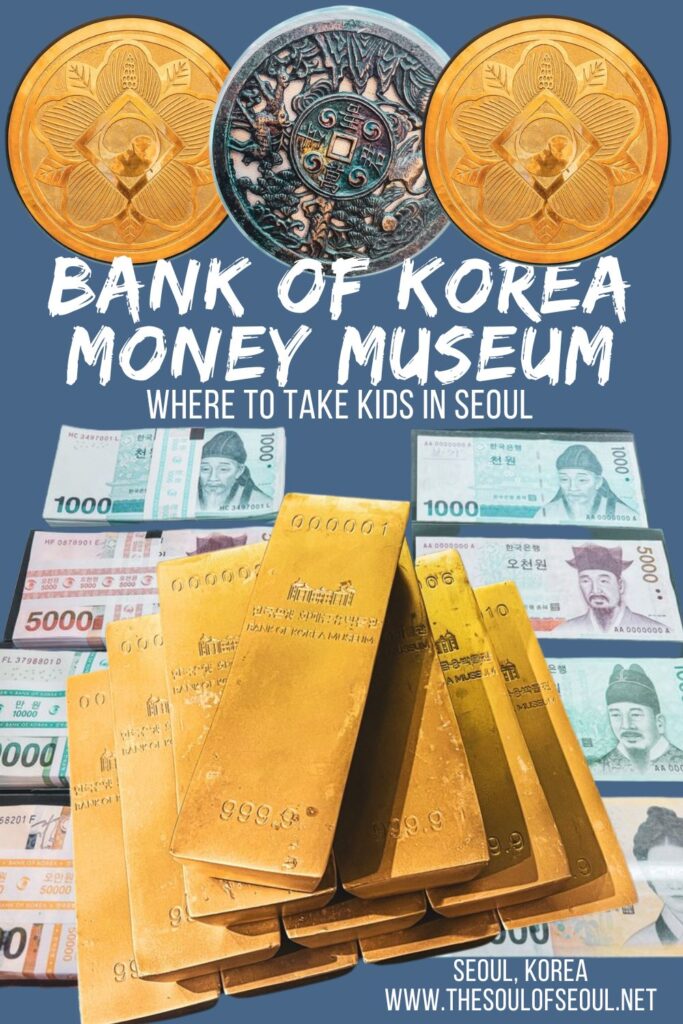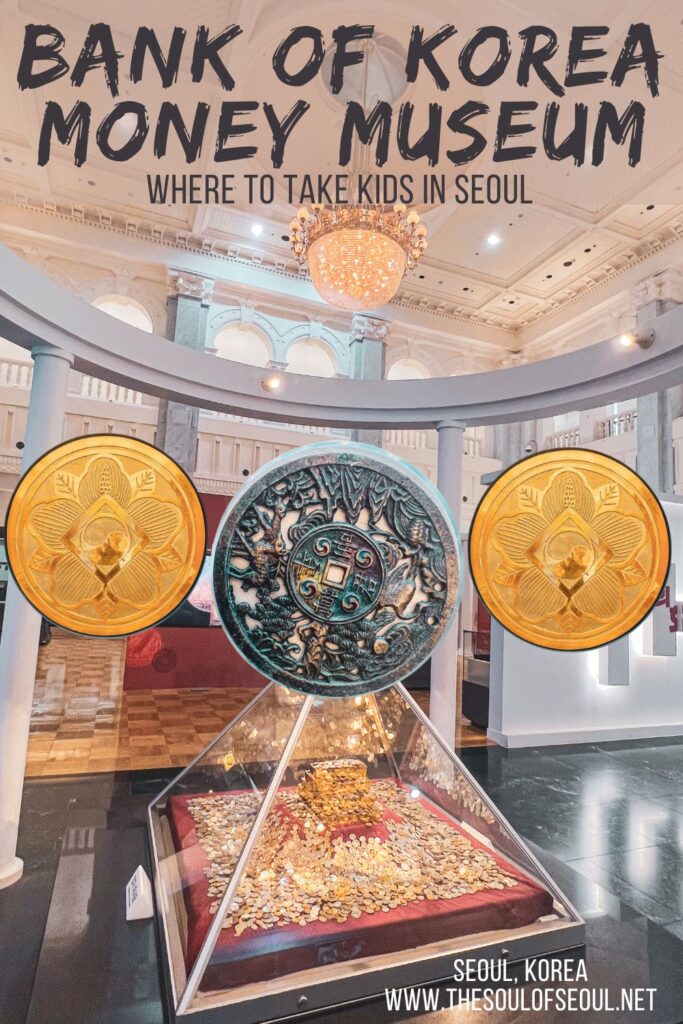Bank of Korea Money Museum in Myeongdong: A Hidden Gem
Last Updated on April 4, 2024
Most people go to Myeongdong for shopping or maybe for all of the delicious street food, but there are some really interesting hidden gems in Myeongdong and museums that people could easily walk by. The Bank of Korea Money Museum (한국은행 화폐박물관) is one of those hidden gems in a beautiful historical building in downtown Seoul.
Learn more about the history of currency culture in Korea and abroad, how currency is made, and check out some really interesting currency design from around the world.

Get ready to learn about money in Korea:
- How To Get There
- Basic Info
- The History
- What To See
- The First Floor
- Who are the people on Korean banknotes?
- What is Sangpyeongtongbo?
- The M Floor
- The Second Floor
(This post contains affiliate links, which means I receive a certain percentage of a sale if you purchase after clicking at no cost to you. Thank you for your support.)
How To Get There
Address: 39 Namdaemun-ro, Jung-gu, Seoul (서울특별시 중구 남대문로 39)
By Subway: You can get there from City Hall Station, exit 7, Euljiro 1-ga Station, exit 7, and Hoehyeon Station, exit 7.
Basic Info
Hours: Tuesday – Sunday: 10:00am ~ 5:00pm
Admission: Free
Guided Tours: Guided tours are approximately 30 minutes.
- In English: At 2:00pm on Tuesdays, Thursdays, Saturdays, and Sundays
- In Chinese: At 2:00pm on Wednesdays and Fridays
- In Korean: At 11:00am and 3:00pm Tuesdays through Sundays
For Kids: Make sure to pick up the Money Museum Stamp Tour at the front desk before you begin your tour. The booklet has information in simpler terms and keeps kids on the right track through the museum.
Website: https://www.bok.or.kr/
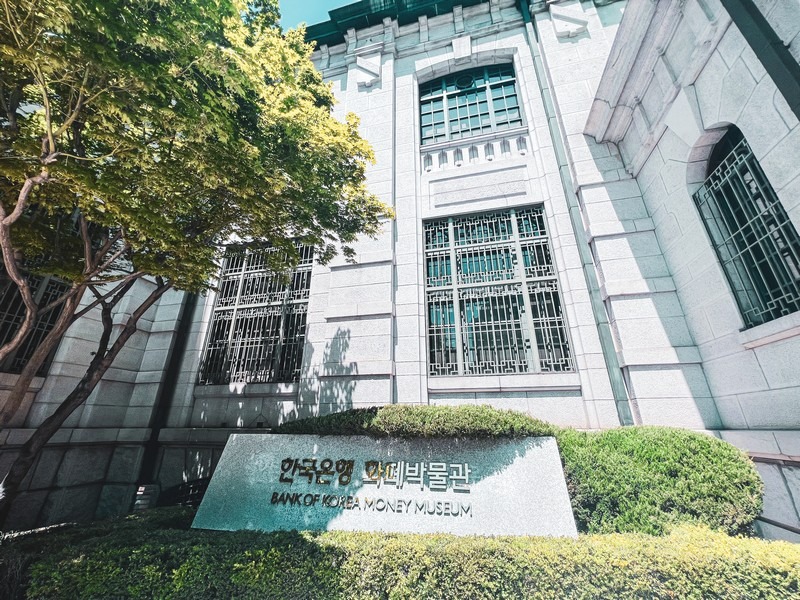
The History
The Money Museum at the Bank of Korea is housed in one of the earliest examples of modern architecture in Korea. Construction on the building began in 1907 and the building was initially going to be the Dai Ichi Ginko, the First National Bank of Japan. However, the older Bank of Korea was established as the central bank of the Korean Empire in 1909 and so the building was repurposed.
During the Japanese colonial period, the bank was renamed the Bank of Joseon and the building was used as the head office from 1912 when the construction was completed.
The three-story stone building was constructed in Renaissance-style. From above, the building is shaped like the character for a stone well, 井, or 우물 (woomul) in Korean. Made of heavy granite, the building is imposing and interesting and stands out in central Seoul. It has been used as the Bank of Korea Money Museum since 2001. Oh and interesting factoid for trivia night: This was the first building in Korea to have an elevator.
What To See

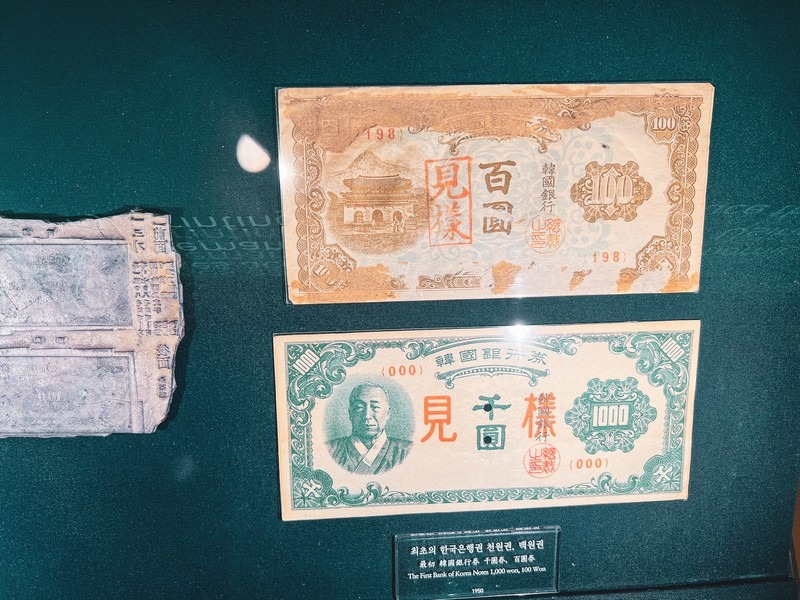
The First Floor
From the entrance, go left and you’ll first walk through the “About the Bank of Korea” section and leads into the “Life of Currency” where you can learn about what currency is made of and how it’s manufactured. This is great if you have kids who wonder about the processes. There is also an area that discusses identifying counterfeit banknotes.
Korean banknotes are made from cotton paper derived from cotton plants, and security measures such as security thread, fluorescent security fibers, and special ink are used to prevent counterfeiting. Korea’s banknotes are equipped with advanced anti-counterfeiting technologies, so it is easy to tell if a bill is authentic or not by being a little cautious.

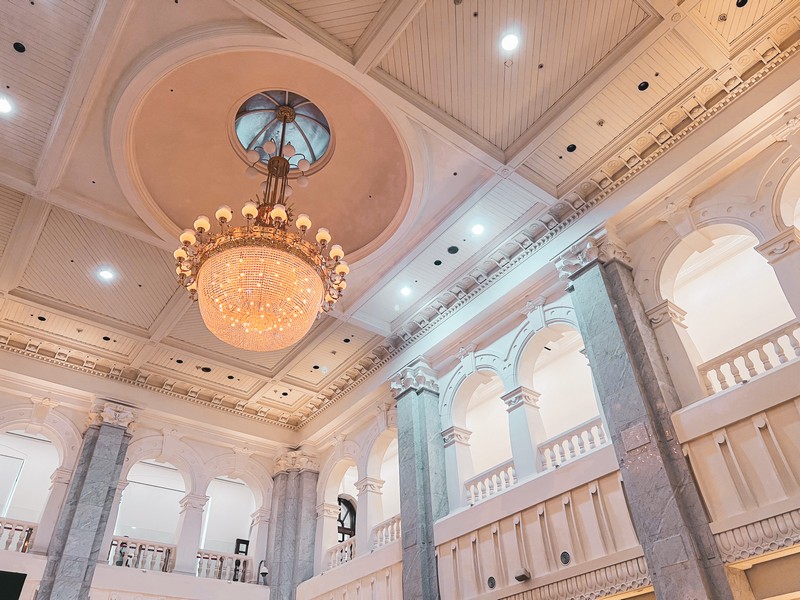
Who are the people on Korean banknotes?
- Design of the Korean W1,000: Yi Hwang was a Confucian scholar during the mid-Joseon Dynasty.
- Design of the Korean W5,000: Yi Yulgok was a Confucian scholar and politician during the middle Joseon Dynasty.
- Design on the Korean W10,000: King Sejong the Great was the fourth king of the Joseon Dynasty among those great achievements was the creation of Hangeul, the Korean writing system.
- Design of the Korean W50,000: Shin Saimdang was one of the most brilliant members of the literati, and calligraphers and painters during the mid-Joseon Dynasty. She excelled in poetry, handwriting, and painting.
Next is an area about economic concepts which was a little too difficult for my little one to process so we didn’t spend much time here. If you have older children learning about finances and economy, this would be beneficial for them.
Next walk into the main area of the hall with gorgeous chandeliers hanging above. This is the “Currency Gallery” and there is a ton of history, information, and beautiful detail to see here.
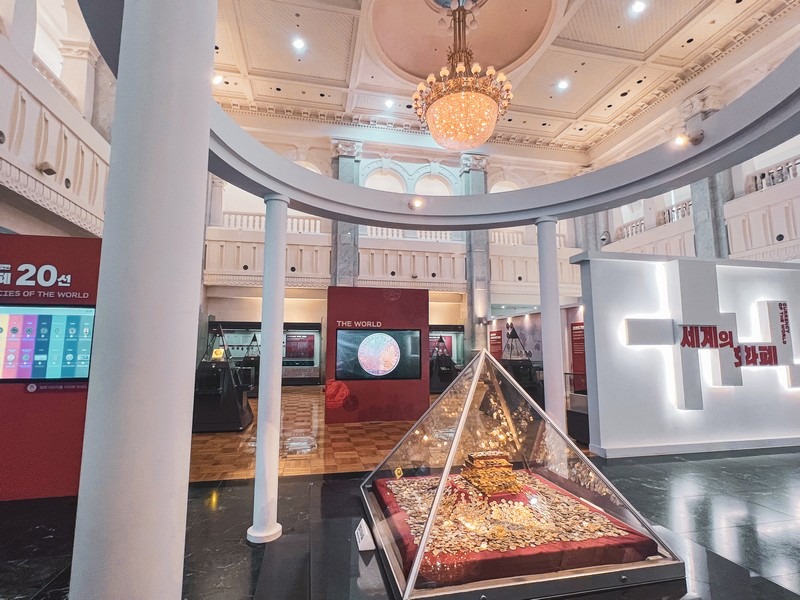
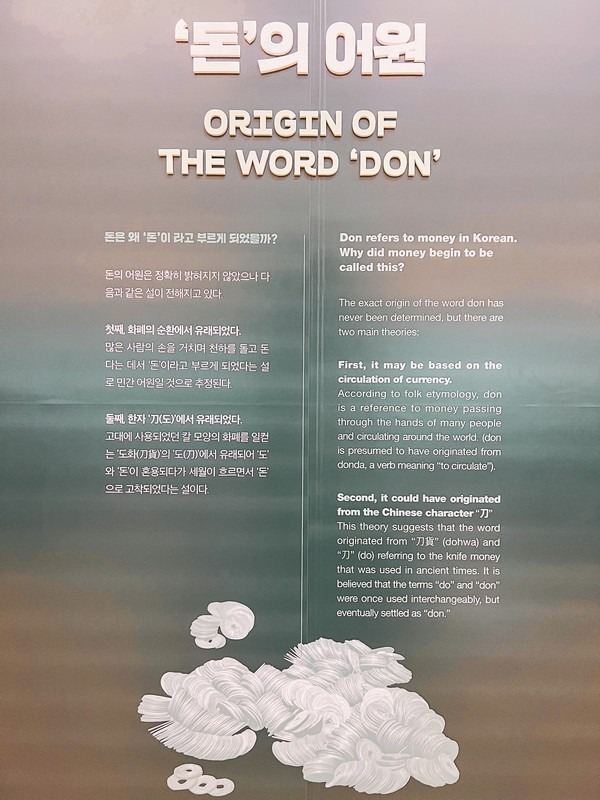
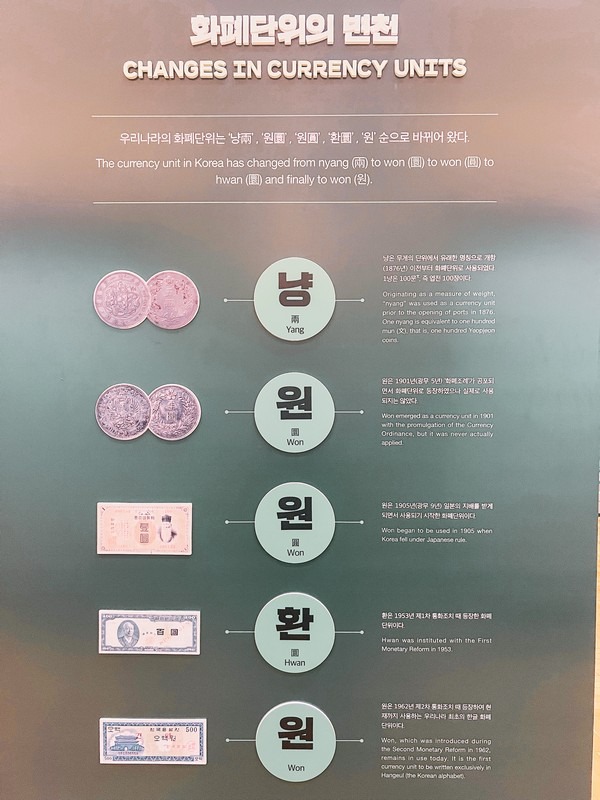
Finally, the first floor houses the Sangpyeongtongbo Gallery. Sangpyeongtongbo are copper coins that were widely used during the Joseon Dynasty. These were the first lawful currency in Korean history. There is a lot of symbolism to learn about these coins as well.
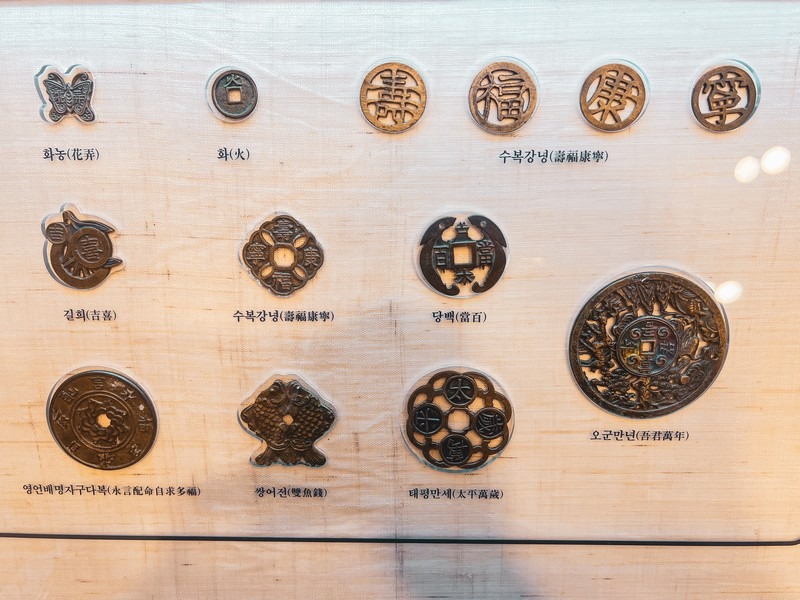
What is Sangpyeongtongbo?
Sanpyeongtongbo are copper coins from the Joseon Dynasty introduced in 1678 during the reign of King Sukjong. It was the first official coin widely distributed across the whole nation.
Melted iron was poured into a mold to form the coins, which were then hammered out and separated from each other. They were called “Yeop Jeon”, or “Leaf Coins”, because before they were removed from the molds, they looked like leaves on a tree branch.
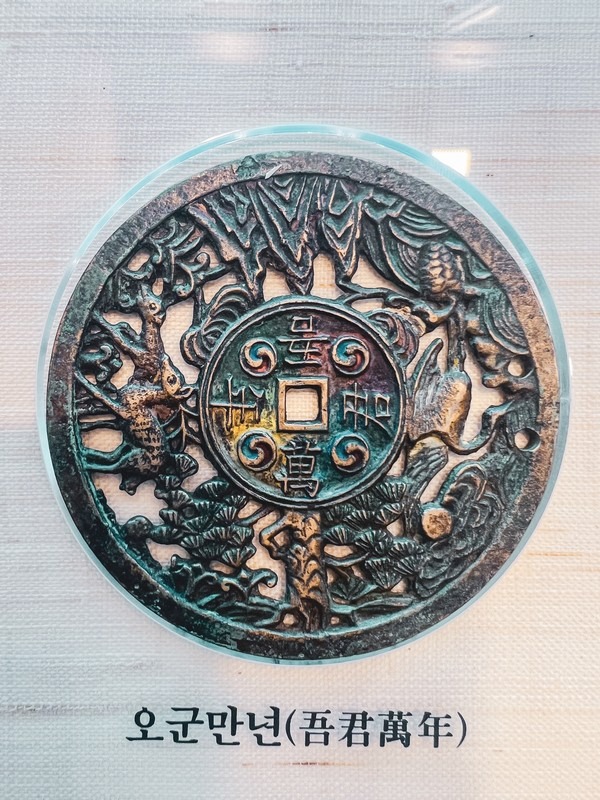
The M Floor
Walk up the steps to a floor that’s a bit more about the offices and history of the building. Check out the “Historical Governor’s Office”, the “Money Museum Construction Room” to see the building from above so you can learn about the shape, and then see the “Historical Monetary Policy Board Conference Room”.

The Second Floor
Head up one more floor and you can find the “Replica Vault”. This is a fun room where there are bags and crates of “money” which you are meant to try to lift to see how heavy the bags are. Kids have a lot of fun with this section trying to show their strength.
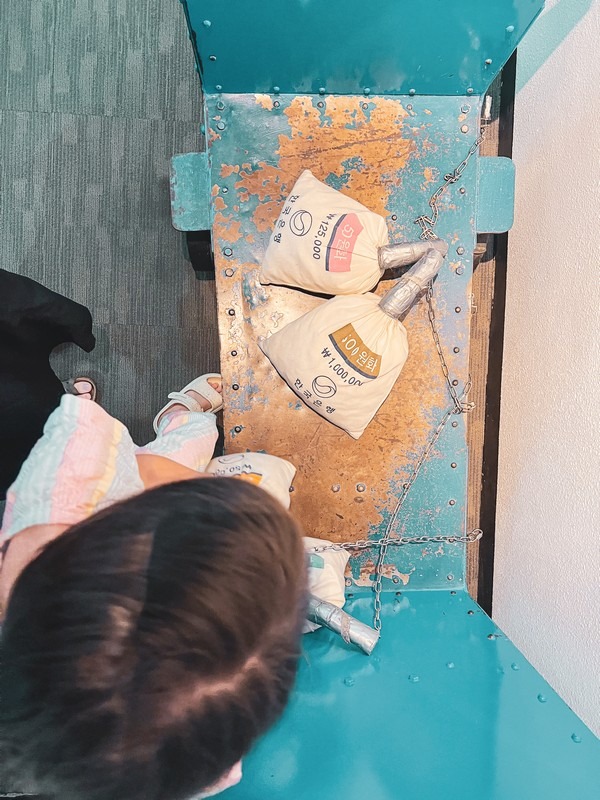


Next is a gallery called “Currency from Around The World”. It’s really interesting and has currencies from around 170 countries. Pull out the drawers in the wall to find all of the amazing designs and denominations. My daughter had fun finding the countries that we’ve traveled to before and checking out the symbols on the money.


There’s a really fun section next called “Play and Learn With Money”. If you have kids, they’ll want to check out everything here. A highlight is stepping into a niche, taking a picture, and making your own version of a Korean W50,000. There are quizzes on currencies and other fun games which are a culmination of what we learned in the galleries and exhibitions before. Have fun!
There is also a special exhibition space that rotates so see what’s going on and what else you can learn about currency in Korea and around the world.
If you’re looking for things to do with kids in Seoul, add this to your list to check out. Or, maybe you’re just interested in design and currency has a lot of that. Whatever it is, this is a really interesting museum in central Seoul, Korea that a lot of people overlook.
Did you like this post? Pin iT!
